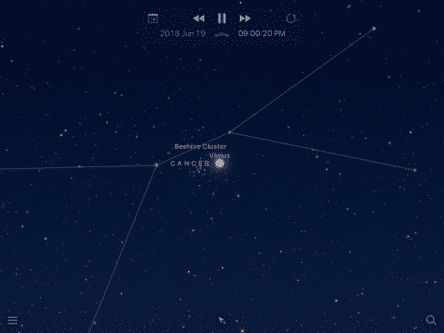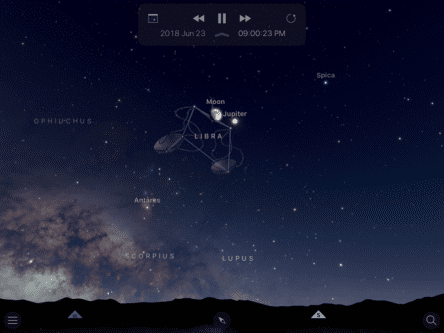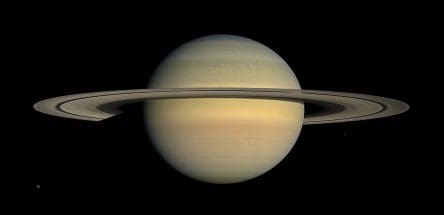Highlights of the June Sky 2018


• June 2 – The moon is apogee, the most distant point in its orbit this month, 251,852 miles away, at 11:35 AM CDT.
• June 3 – During the early morning hours, look for the waning gibbous moon just a few degrees to the north of the planet Mars.
• June 6 – The moon is at last quarter this evening.

June 8 – Look towards the west during the evening to see Venus about 5 degrees to the south of the star Pollux, in the constellation of Gemini.

Italian astronomer Giovanni Cassini was born this day in 1625. Cassini’s many accomplishments include co-discovering Jupiter’s Great Red Spot, discovery of four of Saturn’s moons, discovery of the large gaps in Saturn’s rings, calculated the distance to Mars, described the motions of the moon, and correctly identified the source of the zodiacal light as being dust that surrounds the Sun.
• June 14 – The moon is at perigee, the closest point in its orbit this month, 223,385 miles away, at 6:53 PM, CDT.

• June 15 – Look for a thin crescent moon below bright Venus in our western sky right after sunset.
• June 16 -Free public star party at Pinnacle Mountain State Park hosted by members of the Central Arkansas Astronomical Society. The event takes place at the visitor center parking lot from 8:30 PM to 10:30 PM.

• June 17 – The waxing crescent moon is just a few degrees to the west of the star Regulus in the constellation of Leo.

• June 19 – Look to the west during the early evening to see the planet Venus just skirting the northern edge of the Beehive Star Cluster (Messier 44). Use binoculars to see Venus nestled in among this glittering group of background stars.
• June 21 – The Summer Solstice begins here in the northern hemisphere at 5:07 AM CDT.

• June 23 –Face south about an hour after sunset to see the moon and Jupiter nicely paired together in the sky.

• June 27 – Saturn is at opposition. When a planet is at opposition it lies opposite the Sun from our perspective here on Earth. In other words, if you were “above” the solar system and looking “down”, then you would see a configuration like this: Sun->Earth->Saturn. The best time to view a planet through a telescope is when it is at opposition. This is because the planet is at its closest point in its orbit to the Earth all year and because it is up all-night long.
• June 28 – Full moon occurs at 1:53 AM CDT.

• June 29 -American astronomer George Ellery Hale was born this day in 1868. Hale was responsible for gathering the funds to construct several of the world’s largest telescopes of his day, including the 60-inch telescope at Mount Wilson with which Edwin Hubble discovered that the Andromeda Galaxy lay outside our own (thereby increasing the size of the then known universe), Edwin Hubble and Milton Humason discovered that the universe is expanding, and Fritz Zwicky discovered the existence of dark matter. Hale also made important discoveries of his own, including that magnetic fields are associated with sunspots.

• June 30 – On this day in 1908 a small comet or asteroid entered Earth’s atmosphere and then exploded over a remote area of Siberia known as Tunguska. The Tunguska event is the largest such impact in recorded human history, with an energy yield of 3-5 megatons of TNT. The explosion stripped and flattened millions of trees like matchsticks over an area of 770 square miles.
